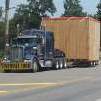Pre fill
Pre fill oil filter
42 members have voted
-
Members Online
- CCAS
- bigmo
- N201MKTurbo
- BobbyH
- kerry
- prillayo03
- MikeOH
- M20E for me
- Mooney-Shiner
- jetdriven
- McMooney
- Schllc
- CL605
- Patrick Horan
- Nico1
- Dwb62
- PT20J
- Tito22
- KSMooniac
- ttflyer
- DCarlton
- 802flyer
- Jon Martin
- richardbrochu27
- Marc_B
- T. Peterson
- MarkD34M
- Rwsavory
- Shortround
- gacoon
- birdofjoy
- 00-Negative
- AspiringOwner
- redbaron1982
- AndreiC


Recommended Posts
Join the conversation
You can post now and register later. If you have an account, sign in now to post with your account.